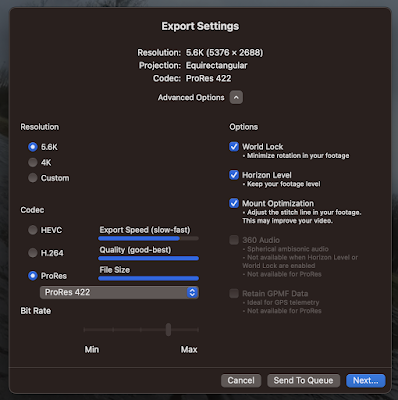Allocate 1 hr.
Introduce self and goals of exercise:
Preamble
Organise class into small mixed groups.
Ask group members to introduce each other. Suggest they exchange contact details with each other.
How would you read an article?
Eat your frogs first.
Reading is one of the hardest tasks at University (writing is harder but that’s the subject of another lecture).
Ask each group to discuss reading strategies.
Then do a snowball debrief (results below)
- Look for key points?
- Scan whole article
- Divide and conquer
- Title/Abstract
- Read from end to end, every single word.
- Look at outline structure
- Read the conclusions first.
- Distilled version of my own, a summary
- Rhetorical methods employed, meta analysis.
- PQRST method (preview, question, read, self-recitation, test)
- SQ3R method (skim/survey, question, read, recite, review)
- SEE-I method (i.e. this paper - state it, elaborate, exemplify/example/evidence, illustrate)
Chapter 1: What is Critical Thinking?
Nosich, Gerald M (2010) Learning to Think Things Through: A Guide to Critical Thinking Across the Curriculum (4th Ed - International Edition), Boston: Pearson
First attempt commenced at 12.35
Think before you leap. Halt the class and explain the classic mistake of flying into the task without discussing and agreeing an approach.
Reading exercise commenced at 12.40
Only 9 groups in today’s class.
Group 1: Pages 1-5
Defines Critical Thinking
Thinkiing about questioning preconceived thoughts
Different ways of achieving the same goal under different conditions
Thinking about things differently
Group 2: Pages 5-7
There are three parts to critical thinking
- Asking: ask the questions that need to be asked.
- Answering: Using reasoning to answer the questions.
- Believing: Do I believe results or reason.
It goes on to ask questions, how best to solve the/a problem.
Strategies:
Don’t jump in
Spirit of the question is important (do it for a reason)
Group 3: Pages 8-12
Mention that you need to discover the question before solving it.
Find a reason for the question.
List of 5 incorrect critical thinkings, fallacies.
- Reason something out.
- There is always a reason for the result we encounter
There are also ‘uncritical’ or erroneous ways of reasoning.
- Asking someone and just accepting what they say
- Your own background assumptions
- Answers without supporting evidence
- Answers that are based on your personality traits.
- Answers that are the first thought in your head.
Group 4: Pages 12-16
What critical thinking is not:
Not negative. Not negativity
Imortance of negative feedback.
Critical thinking is not emotionless.
It has emotion.
Example of mother child relationship.
In fact, emotions give us data. Emotional responses are often valid and necessary data.
Group 5: Pages 16-19
How critical thinking is formed.
Early life experiences, positive/negative experiences can affect our thought processes.
How we form opinions from media, but these opinions aren’t actually ours.
Risks of media as a source, as it tends to focus on extremes or unusual occurances.
Need to realise that society is not homogenous, bell curves and not averages. Also extreme cases.
Group 6: Pages 20-25
Obstacles to critical thinking and further definitions.
Need to accept there may be more than one interpretation.
We are afraid of making mistakes, trying new things, or looking foolish.
We may be…
Egocentric rather than socially minded.
Past experiences colour interpretation.
Personal experiences, like status, education, class, gender, authority system, …
Group 7: Pages 26-30
Why do we need critical thinking, because…
For practical decision making, what clothes to buy,
Some decisions have different levels of meaningfulness, particularly identity e.g. finding a life partner, occupation etc.
Group 8: Pages 30-34
Propose the SEE-I method
S: State it
E. Elaborate (explain to your taxi driver)
E: Exemplify (example, evidence)
I: Illustrate (depict, story, picture, analogy, map, diagram)
A way of clarifying… It begins with asking questions and helps us clarify our own thoughts and build information.
Explanations of SEE-I definition
Shows that the method is quite flexible and can be applied in wide contexts, to allow us form ‘our own opinion’, ‘capture the essence of the idea in a situation’, helps us elaborate on these things.
Improves creativity and writing skills.
Group 9: Pages 34-37
Provides a template.
For analysing texts in-depth i.e. critique, divide and summarise.
The process of reasoning; e.g. standards of accuracy, logical reasoning or constructing argument.
The outcomes would be, to highlight mistakes or errors or fallacies.
So critical analysis results in a better world, better future.
Emancipatory; i.e. Bart emancipates himself from what? From the family, so that he becomes legally an adult.
Group 10: Pages 38-39
<your comments/observations here>
Group 11: Pages 39
<your comments/observations here>
Group 11: Pages 39
<your comments/observations here>
Group 12: Pages 44-46
<your comments/observations here>
Touchpoint 1: Critical Analysis
•What does critical analysis mean?
Touchpoint 2 – Collaboration
•How did your dyad/group work together?
Touchpoint 3 – Independent learning
PROBLEMS with Independent learning
Did I ask a question?
Touchpoint 4 – Communication skills
How can I do better?
Do I need to learn new skills?
Touchpoint 5:Reflective Practice
Can I use anything we did here again?
Will I change what I do or the way I go about doing it?
Adopt SEE-I?
S: State it
E. Elaborate (explain to your taxi driver)
E: Exemplify (example, evidence)
I: Illustrate (depict, story, picture, analogy, map, diagram)

